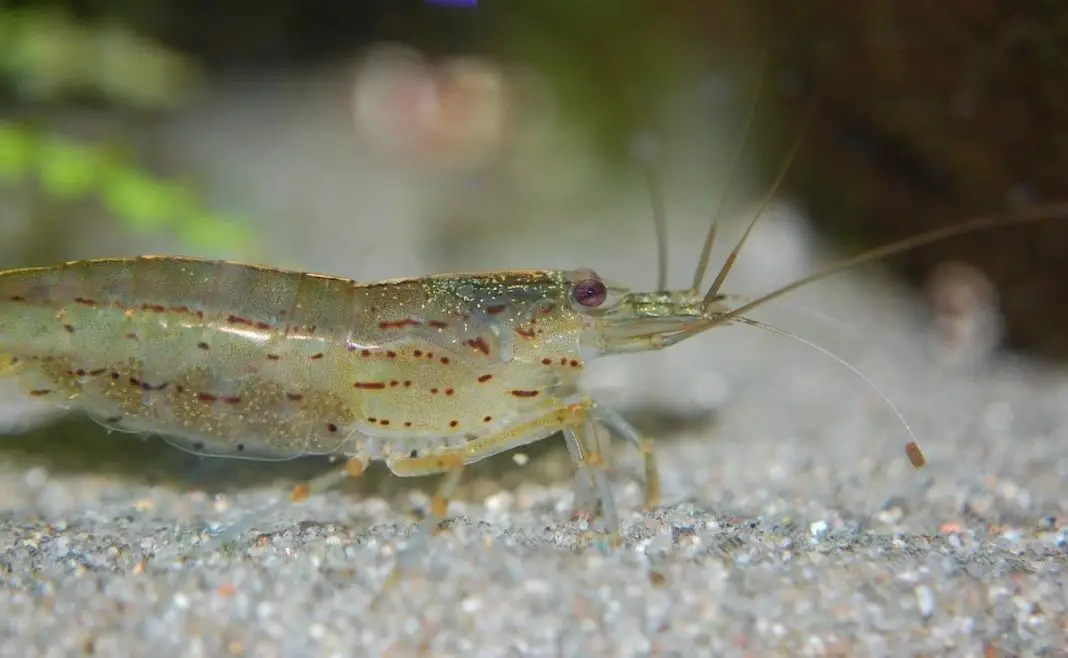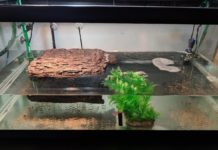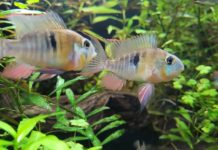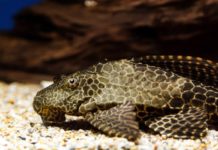Contents
- Has Your Amano Shrimp Disappeared?
- Finding An Amano Shrimp That’s Disappeared
- Could They Have Jumped Out Of The Tank?
- Enticing An Amano Shrimp From Their Hiding
- Does Your Amano Share Their Tank With Fish?
- What Should You Do If Your Amano Shrimp Is Always Hiding?
Has Your Amano Shrimp Disappeared?
Amano shrimps are fascinating creatures. If you are new to the world of shrimp keeping, you may find that they can do a magical disappearing act, and you might’ve wondered where they went to.
It’s common for an Amano shrimp to often find ways to conceal themselves due to molting or stress. To find out where your Amano shrimp could be hiding, here’re a few tips to help you find them.
Finding An Amano Shrimp That’s Disappeared
Plants And Moss
Often when an Amano shrimp is newly introduced to a tank, they will hide due to stress and fear until they acclimatize, so you shouldn’t worry if your shrimp is a recent addition. It’s best to give your new Amano shrimp a couple of days to get used to their new home. You should eventually see them emerge on their own accord. Some of their favorite places to hide include plants and moss. However, there are other less obvious places you may need to look to where your shrimp is.
Trapped Inside The Filter Intake Tube
Often after checking tank plants and you can’t find them, it’s possible for them to be caught up in your filter intake valve.
It’s recommended for shrimp owners to always ensure that they’ve covered up the intake tubes with filter media so that their Amano shrimps don’t get caught in the tube. Here’re some good options for shrimp friendly filters that you can try:
- Sponge Filter
- HOB (hang on Back) filter
- Corner Filter
Could They Have Jumped Out Of The Tank?
An Amano shrimp can jump out of its tank, they can do it for a variety of reasons. Some causes include the wrong water parameters and a reaction to other non-compatible tank mates out of fear. It’s recommended for shrimp owners to always leave an inch or two of a gap between the water and the top of your tank to discourage the shrimp from jumping out of the tank.
As Amano shrimp are not nocturnal, they don’t have any particular preferences with regards to daytime or nighttime. Therefore, they will remain active during any portion of the day or night that suits them. There’s plenty of Amano shrimp that are inactive during the day and active during the night.
If you keep regular hours, you’re unlikely to see them, unless you’ve chosen to stay up long enough to watch them as they emerge from their hiding place.
Enticing An Amano Shrimp From Their Hiding
If you’re still unsure of where your shrimp is hiding, you can try to lure them out of hiding with some of their favorite food.
- Grab some food that you know your shrimp loves, like pellets or vegetables
- Leave the food in a bowl and leave the bowl out for around 20 minutes
- Wait to see if your Amano shrimp to reacts to the food scents and come to investigate the bowl
Does Your Amano Share Their Tank With Fish?
If your Amano shrimp shares a tank with fish, another reason could be the result of predation. There are certain fish breeds that will exhibit higher levels of predation according to their species. Although some fish may nibble on a newly born Amano shrimp, there’re certain breeds of fish that can eat shrimp even when they are adults. Some fish to look out for:
Aggressive fish breeds like Barbs, Mollies, Serpea, tetra Betta, Cichlids, Discuses, Angelfish could be a problem for Amano shrimp. You should also be careful with large-mouthed species that can eat shrimp in one mouthful.
They Could Be Molting
Amano shrimps have exoskeletons that they’ll shed every 5-6 weeks. Like the other tank inhabitants, their size tends to grow with their age. So, once their exoskeleton becomes too small to contain them, they’ll quickly abandon it.
What Should You Do If Your Amano Shrimp Is Always Hiding?
If your Amano shrimp is hiding because of external factors, there’re always ways to help them, including:
Adjusting Their Environment
It’s highly suggested that you test your water to ensure that the parameters are correct. Aim for a pH of 6.0 to 7.0, and a temperature of 70 to 80 degrees F.
To get a better idea of your tank’s condition, you should consider getting an affordable testing kit, so you’ll be able to measure the pH, ammonia, nitrates, and nitrites within minutes.
Perform Routine Maintenance
Performing regular but small water changes is important. More extensive water changes are just as likely to send your shrimp into hiding due to the stress that water changes can cause.
A larger tank allows you to get away with fewer water changes. Also, don’t forget to add the relevant conditioners whenever you’ve performed a water change. Conditioners are useful for removing elements like chloramine and copper that may be present in newer water.








